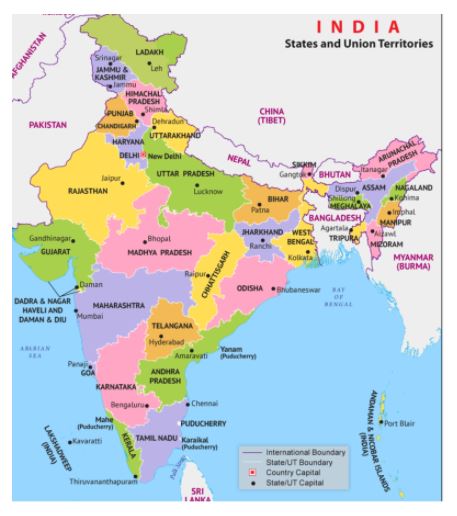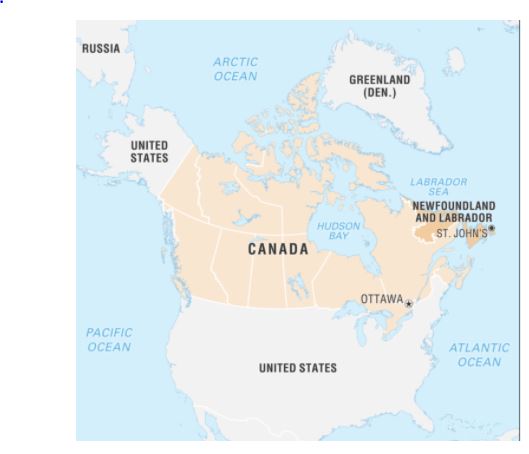IASbaba Daily Prelims Quiz
For Previous Daily Quiz (ARCHIVES) – CLICK HERE
The Current Affairs questions are based on sources like ‘The Hindu’, ‘Indian Express’ and ‘PIB’, which are very important sources for UPSC Prelims Exam. The questions are focused on both the concepts and facts. The topics covered here are generally different from what is being covered under ‘Daily Current Affairs/Daily News Analysis (DNA) and Daily Static Quiz’ to avoid duplication. The questions would be published from Monday to Saturday before 2 PM. One should not spend more than 10 minutes on this initiative.
This is a part of our recently launched, NEW INITIATIVE IASbaba’s INTEGRATED REVISION PLAN (IRP) 2020 – Road Map for the next 100 Days! FREE INITIATIVE!
We will make sure, in the next 4 months not a single day is wasted. All your energies are channelized in the right direction. Trust us! This will make a huge difference in your results this time, provided that you follow this plan sincerely every day without fail.
Gear up and Make the Best Use of this initiative.
Do remember that, “the difference between Ordinary and EXTRA-Ordinary is PRACTICE!!”
To Know More about the Initiative -> CLICK HERE
SCHEDULE/DETAILED PLAN – > CLICK HERE
Important Note:
- Don’t forget to post your marks in the comment section. Also, let us know if you enjoyed today’s test 🙂
- After completing the 5 questions, click on ‘View Questions’ to check your score, time taken and solutions.
Test-summary
0 of 5 questions completed
Questions:
- 1
- 2
- 3
- 4
- 5
Information
To view Solutions, follow these instructions:
- Click on – ‘Start Test’ button
- Solve Questions
- Click on ‘Test Summary’ button
- Click on ‘Finish Test’ button
- Now click on ‘View Questions’ button – here you will see solutions and links.
You have already completed the test before. Hence you can not start it again.
Test is loading...
You must sign in or sign up to start the test.
You have to finish following test, to start this test:
Results
0 of 5 questions answered correctly
Your time:
Time has elapsed
You have scored 0 points out of 0 points, (0)
| Average score |
|
| Your score |
|
Categories
- Not categorized 0%
| Pos. | Name | Entered on | Points | Result |
|---|---|---|---|---|
| Table is loading | ||||
| No data available | ||||
- 1
- 2
- 3
- 4
- 5
- Answered
- Review
-
Question 1 of 5
1. Question
Consider the following statements with respect to National ayurveda day 2020:
- Ayurveda for Covid-19 is the theme of National ayurveda day 2020.
- The National Ayurveda Day is celebrated every year on the occasion of Dhanwantari Jayanti.
Which of the above statements is/are correct?
Correct
Solution (c)
- The National Ayurveda Day is celebrated every year on the occasion of Dhanwantari Jayanti (Dhanteras). This year Ayurveda Day is being observed on 25th October 2019.
- Ayurveda is perceived as one of the most ancient and well documented system of medicine equally relevant in modern times.
- Ayurveda for Covid-19 is the theme this year.
- Objectives:
- An attempt to further promote Ayurveda into mainstream
- Focus on strengths of Ayurveda and its unique treatment principles
- Reduce the burden of disease and related morbidity and mortality by utilizing the potential of Ayurveda.
- Exploring the potential of Ayurveda to contribute towards National health policy & National Health programmes.
- Create a sense of awareness in today’s generation and promote Ayurvedic principles of healing in society.
Incorrect
Solution (c)
- The National Ayurveda Day is celebrated every year on the occasion of Dhanwantari Jayanti (Dhanteras). This year Ayurveda Day is being observed on 25th October 2019.
- Ayurveda is perceived as one of the most ancient and well documented system of medicine equally relevant in modern times.
- Ayurveda for Covid-19 is the theme this year.
- Objectives:
- An attempt to further promote Ayurveda into mainstream
- Focus on strengths of Ayurveda and its unique treatment principles
- Reduce the burden of disease and related morbidity and mortality by utilizing the potential of Ayurveda.
- Exploring the potential of Ayurveda to contribute towards National health policy & National Health programmes.
- Create a sense of awareness in today’s generation and promote Ayurvedic principles of healing in society.
-
Question 2 of 5
2. Question
Consider the following statements with respect to Quick Reaction Surface-to-Air missiles:
- It is a surface to air missile developed by the Defence Research and Development Organisation (DRDO)
- It uses solid fuel propellant and has a strike range of 50-100 km with capability of hitting single targets.
Which of the above statements is/are correct?
Correct
Solution (a)
- The missile, developed by the Defence Research and Development Organisation (DRDO) for the Indian Army, was flight-tested from the Integrated Test Range (ITR) at Chandipur
- It has been developed to replace the ‘Akash’ missile defence system, and has 360-degree coverage.
- It uses solid fuel propellant and has a strike range of 25-30 km with capability of hitting multiple targets.
- It is capable of hitting the low flying objects.
- The missile is an all-weather, all-terrain surface-to-air missile equipped with electronic counter measures against jamming by aircraft radars
- The missile can be mounted on a truck and is stored in a canister.
- The missile is equipped with a midcourse inertial navigation system with a two-way data link and a DRDO-developed terminal active seeker. The system has the capability to search and track targets while moving.
- QRSAM is a compact weapon system and is mobile. It has a fully automated Command and Control System. The missile system comprises of two four-walled radars both of which encompass a 360-degree coverage, namely, the Active Array Battery Surveillance Radar and the Active Array Battery Multifunction Radar, apart from the launcher.
Incorrect
Solution (a)
- The missile, developed by the Defence Research and Development Organisation (DRDO) for the Indian Army, was flight-tested from the Integrated Test Range (ITR) at Chandipur
- It has been developed to replace the ‘Akash’ missile defence system, and has 360-degree coverage.
- It uses solid fuel propellant and has a strike range of 25-30 km with capability of hitting multiple targets.
- It is capable of hitting the low flying objects.
- The missile is an all-weather, all-terrain surface-to-air missile equipped with electronic counter measures against jamming by aircraft radars
- The missile can be mounted on a truck and is stored in a canister.
- The missile is equipped with a midcourse inertial navigation system with a two-way data link and a DRDO-developed terminal active seeker. The system has the capability to search and track targets while moving.
- QRSAM is a compact weapon system and is mobile. It has a fully automated Command and Control System. The missile system comprises of two four-walled radars both of which encompass a 360-degree coverage, namely, the Active Array Battery Surveillance Radar and the Active Array Battery Multifunction Radar, apart from the launcher.
-
Question 3 of 5
3. Question
If we want to travel from Thiruvananthapuram to Patna what is the minimum number of states we passes through?
Correct
Solution (a)
 Incorrect
Incorrect
Solution (a)

-
Question 4 of 5
4. Question
Labrador Sea which was recently in news, is located between which two countries?
Correct
Solution (c)
Labrador Sea, northwestern arm of the North Atlantic Ocean, between Labrador, Canada (southwest), and Greenland (northeast). It is connected with Baffin Bay (north) through Davis Strait and with Hudson Bay (west) through Hudson Strait.
 Incorrect
Incorrect
Solution (c)
Labrador Sea, northwestern arm of the North Atlantic Ocean, between Labrador, Canada (southwest), and Greenland (northeast). It is connected with Baffin Bay (north) through Davis Strait and with Hudson Bay (west) through Hudson Strait.

-
Question 5 of 5
5. Question
Bru community which was recently in news, concentrated mainly in which region of India?
Correct
Solution (a)
- Bru or Reang is a community indigenous to Northeast India, living mostly in Tripura, Mizoram and Assam. In Tripura, they are recognised as a Particularly Vulnerable Tribal Group.
- Brus, also known as Reangs, are ethnically different from the Mizos, with their own distinct language and dialect and form one of the 21 scheduled tribes of Tripura.
- Displaced Bru tribals from Mizoram are living as refugees in Tripura since 1997.
- In 1997, roughly half the Bru population fled to Tripura, following violent clashes with the Mizo population.
- Recently, the union home ministry finally inked the tripartite pact which now paves the way for these displaced Bru tribals from Mizoram to permanently settle in Tripura.
- The Brus–spread across Tripura, Mizoram and parts of southern Assam–are the most populous tribe in Tripura.
Incorrect
Solution (a)
- Bru or Reang is a community indigenous to Northeast India, living mostly in Tripura, Mizoram and Assam. In Tripura, they are recognised as a Particularly Vulnerable Tribal Group.
- Brus, also known as Reangs, are ethnically different from the Mizos, with their own distinct language and dialect and form one of the 21 scheduled tribes of Tripura.
- Displaced Bru tribals from Mizoram are living as refugees in Tripura since 1997.
- In 1997, roughly half the Bru population fled to Tripura, following violent clashes with the Mizo population.
- Recently, the union home ministry finally inked the tripartite pact which now paves the way for these displaced Bru tribals from Mizoram to permanently settle in Tripura.
- The Brus–spread across Tripura, Mizoram and parts of southern Assam–are the most populous tribe in Tripura.














